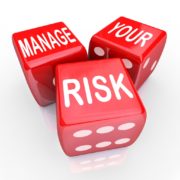Everyone Needs Risk Management
Usually risk is only thought of as the thing that can ruin your life and/or business. Indeed, risk events of any category can be fatal to a company’s strategy and eventually to its survival. Risk analysis and management is a huge industry which includes thousands of companies but it is also for the individual too. Because individual investors face many risks too.
The first step in creating an effective risk management strategy is to understand the differences between the types of risk which the organisations face.
Types of risk
We can divide risk in three categories, using the following definition of risk as a starting point:
“Organisations face internal and external actors and influences that make it uncertain whether, when, and the extent to which they will achieve or exceed their objectives. The effect this uncertainty has on the organisation’s objectives is risk.” . This definition is given by analysts after a survey conducted by advisory firm PRB.
One of the categories consists of the so called preventable risks. These are internal risks and are controllable. Therefore, they need to be either eliminated or avoided. Among them are the risks from breakdown in routine operational processes.
The second category are the strategy risks. The company accepts and takes some risk in order to generate bigger returns from its strategy. The difference between this and the first category of preventable risks, is that strategy risks are not inherently undesirable. Strategy risks cannot be managed through a rules-based control model. Rather than that the company needs a risk management system designed to improve the company’s ability to manage risk events, in case they occur.
The third type of risks are the external risks. They arise from outside the company and are beyond its control. These might be political or natural disasters or macroeconomic shifts. External risks require a different type of strategy, because companies cannot prevent such events from occurring. So, the management must focus on mitigation of their impact.
Having in mind the abovementioned classification, it should be highlighted that companies need to tailor their risk analysis and risk management processes to these categories. Because the appropriate approach for one of them is totally incompatible with the other.
Why do we need to manage risk?
Risk management is important because without it an organization cannot possibly be able to define its objectives for the future. In case it defines its objectives without taking risks into consideration, it is highly possible that they lose direction once any of the risks occurs. One thing is sure – whether it comes to daily life or business: having a risk management strategy in place ahead of time can control and prevent negative outcomes.
Risk management plans improve a company’s health, integrity and resilience in many ways. RM planning makes for consistent and efficient operations. On the other hand, all of the improvements lead to more satisfied customers. And when the business engages in the RM risk management process of planning, it discovers a significant amount of information that reveals operational inefficiencies, opportunities to save money, etc. In this way, resolving all the issues found during the process, a company improves its bottom line. We can continue with the benefits of risk management highlighting that and RM plan protects a company’s resources; helps in discovering reusable information; improves a company’s brand and shows it holds itself to a high standard.
As we already mentioned, one of the categories of risk cannot be avoided or reduced. External risks lie outside the company’s control. But “a firm’s ability to weather storms depends on how seriously executives take risk management when the sun is shining and no clouds are on the horizon” (according to Harvard Business Review). Therefore, we can undoubtedly conclude that even when risks cannot be excluded, a good risk management plan can help in mitigating it and its outcomes, and literally save an organization or a business from failure.
The basis of RM planning
The following four steps form the basis of risk management process. In the first place, risk is assessed, then it is categorized, after that an appropriate approach for it is chosen, and finally comes the implementation of strategy. And the last two depend on the answers of the following questions: Can the risk be avoided? Can it be reduced? Can the risk be transferred? For those risks which cannot be avoided, reduced, or transferred, the option is to retain them. Having said that, we come to a point, stated earlier: that the basis of crеating an efficient risk management plan and system lies in understanding the qualitative distinctions among the types of risks that organizations face.
If you want to learn more about our Risk Management related services, or LaRA (Latona Risk Analysis System), click here or contact us.












Leave a Reply
Want to join the discussion?Feel free to contribute!